#Kubernetes Scalability
Explore tagged Tumblr posts
Text
K3s vs K8s: The Best Kubernetes Home Lab Distribution
K3s vs K8s: The Best Home Lab Kubernetes Distribution @vexpert #vmwarecommunities #100daysofhomelab #homelab #KubernetesHomeLab #k3svsk8s #LightweightKubernetes #KubernetesDistributions #EdgeComputing #HighAvailabilityinKubernetes #KubernetesScalability
Kubernetes, a project under the Cloud Native Computing Foundation, is a popular container orchestration platform for managing distributed systems. Many who are running home labs or want to get into running Kubernetes in their home lab to get experience with modern applications may wonder which Kubernetes distribution is best to use. Today, we will compare the certified Kubernetes distribution…

View On WordPress
#Certified Kubernetes Distribution#edge computing#High Availability in Kubernetes#K3s for Local Development#k3s vs k8s#Kubernetes distributions#Kubernetes home lab#Kubernetes Scalability#Lightweight Kubernetes#Resource-Constrained Environments
0 notes
Text
Virtualization & Containerization: The New Era of Software Deployment.
Sanjay Kumar Mohindroo Sanjay Kumar Mohindroo. skm.stayingalive.in Explore how virtualization and containerization technologies like Docker and Kubernetes reshape software deployment through efficient resource use, scalability, and portability in an engaging, inspiring, and discussion-sparking deep dive. How Docker and Kubernetes are reshaping our tech world This post explains how…
#Business growth#cloud#Containerization#Cyber Security#Docker#Efficient Resource Utilization#IT Efficiency#Kubernetes#News#Open Source#Portability#Sanjay Kumar Mohindroo#Scalability#Software Deployment#Virtualization
0 notes
Text

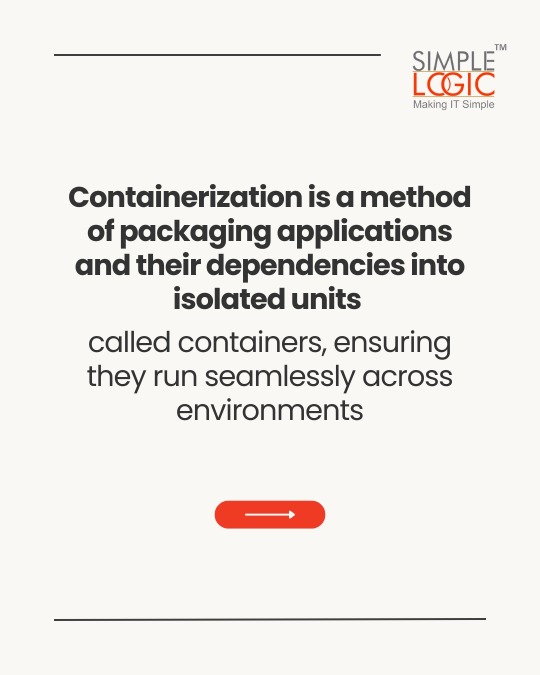
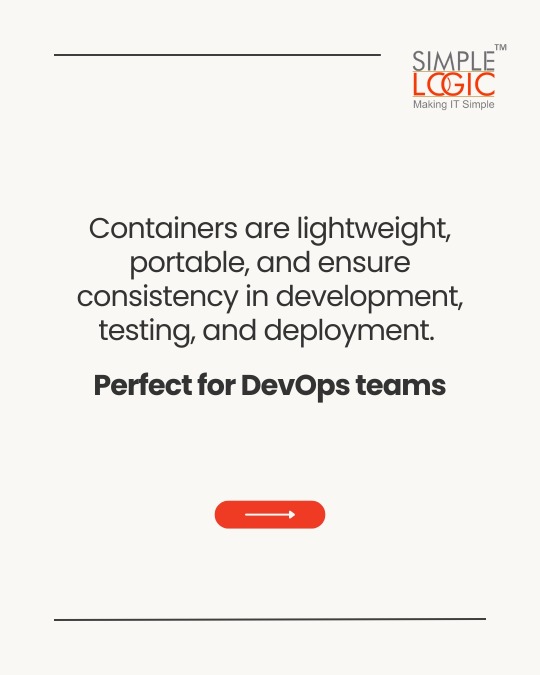
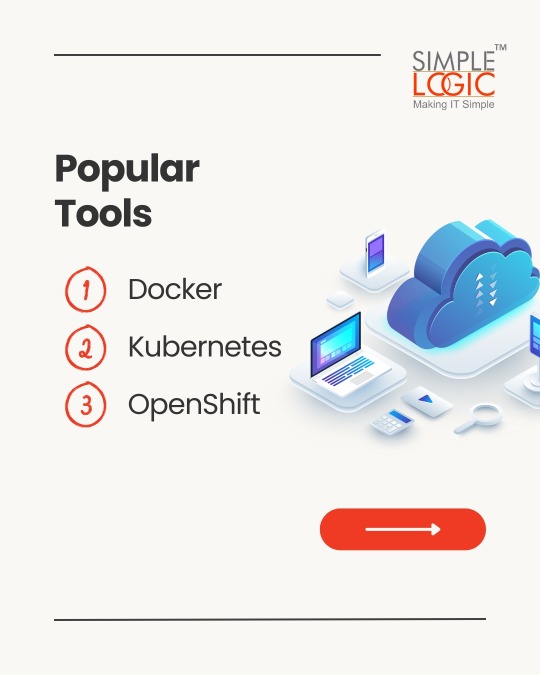
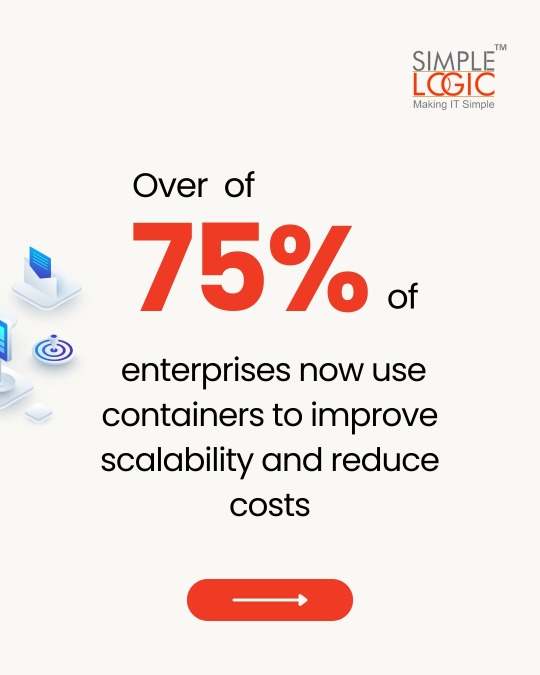

#TechKnowledge Have you heard of Containerization?
Swipe to discover what it is and how it can impact your digital security! 🚀
👉 Stay tuned for more simple and insightful tech tips by following us.
🌐 Learn more: https://simplelogic-it.com/
💻 Explore the latest in #technology on our Blog Page: https://simplelogic-it.com/blogs/
✨ Looking for your next career opportunity? Check out our #Careers page for exciting roles: https://simplelogic-it.com/careers/
#techterms#technologyterms#techcommunity#simplelogicit#makingitsimple#techinsight#techtalk#containerization#application#development#testing#deployment#devops#docker#kubernets#openshift#scalability#security#knowledgeIispower#makeitsimple#simplelogic#didyouknow
0 notes
Text
#ContainerOrchestration#CloudComputing#Kubernetes#Docker#Microservices#DevOps#CloudInfrastructure#Containerization#ITInfrastructure#DigitalTransformation#EdgeComputing#Automation#Scalability#InfrastructureManagement
0 notes
Text
Scaling ERP Systems with Kubernetes: Managing Complex Workloads Efficiently Discover how integrating ERP systems with Kubernetes enhances scalability, flexibility, and resilience. From Odoo ERP customization to full-scale custom ERP development, Kubernetes provides the tools necessary for modern businesses to manage complex workloads with ease.
#ERP#Kubernetes#OdooERP#Scalability#CloudComputing#CustomSoftware#EnterpriseSolutions#TechInnovation#BusinessGrowth
0 notes
Text
The role of containerization in DevOps, and what are some popular containerization tools?
Containerization plays a crucial role in DevOps by providing a consistent and isolated environment for applications and their dependencies. Containers package applications and all required libraries and settings into a single, lightweight unit, making it easier to deploy, scale, and manage applications across different environments. Here’s a more detailed look at the role of containerization in…
View On WordPress
#Consistency#ContainerDeployment#Containerization#ContainerizationTrends#ContainerManagement#ContainerOrchestration#ContainerRegistries#ContainerSecurity#DevOps#DevOpsPractices#DevOpsTools#Docker#DockerHub#Isolation#Kubernetes#Microservices#OCI#Portability#Scalability
0 notes
Text
Ready to future-proof your applications and boost performance? Discover how PHP microservices can transform your development workflow! 💡
In this powerful guide, you'll learn: �� What PHP Microservices Architecture really means ✅ How to break a monolithic app into modular services ✅ Best tools for containerization like Docker & Kubernetes ✅ API Gateway strategies and service discovery techniques ✅ Tips on error handling, security, and performance optimization
With real-world examples and practical steps, this guide is perfect for developers and teams aiming for faster deployment, independent scaling, and simplified maintenance.
🎯 Whether you’re a solo developer or scaling a product, understanding microservices is the key to next-level architecture.
🌐 Brought to you by Orbitwebtech, Best Web Development Company in the USA, helping businesses build powerful and scalable web solutions.
📖 Start reading now and give your PHP projects a cutting-edge upgrade!
2 notes
·
View notes
Text
Build the Future of Tech: Enroll in the Leading DevOps Course Online Today
In a global economy where speed, security, and scalability are parameters of success, DevOps has emerged as the pulsating core of contemporary IT operations. Businesses are not recruiting either developers or sysadmins anymore—employers need DevOps individuals who can seamlessly integrate both worlds.
If you're willing to accelerate your career and become irreplaceable in the tech world, then now is the ideal time to sign up for Devops Course Online. And ReferMe Group's AWS DevOps Course is the one to take you there—quicker.

Why DevOps? Why Now?
The need for DevOps professionals is growing like crazy. As per current industry reports, job titles such as DevOps Engineer, Cloud Architect, and Site Reliability Engineer are among the best-paying and safest careers in technology today.
Why? Because DevOps helps businesses to:
Deploy faster using continuous integration and delivery (CI/CD)
Boost reliability and uptime
Automate everything-from infrastructure to testing
Scale apps with ease on cloud platforms like AWS
And individuals who develop these skills are rapidly becoming the pillars of today's tech teams.
Why Learn a DevOps Online?
Learning DevOps online provides more than convenience—it provides liberation. As a full-time professional, student, or career changer, online learning allows you:
✅ To learn at your own pace
✅ To access world-class instructors anywhere
✅ To develop real-world, project-based skills
✅ To prepare for globally recognized certifications
✅ J To join a growing network of DevOps learners and mentors
It’s professional-grade training—without the classroom limitations.
What Makes ReferMe Group’s DevOps Course Stand Out?
The AWS DevOps Course from ReferMe Group isn’t just a course—it’s a career accelerator. Here's what sets it apart:
Hands-On Labs & Projects: You’ll work on live AWS environments and build end-to-end DevOps pipelines using tools like Jenkins, Docker, Terraform, Git, Kubernetes, and more.
Training from Experts: Learn from experienced industry experts who have used DevOps at scale.
Resume-Reinforcing Certifications: Train to clear AWS and DevOps certification exams confidently.
Career Guidance: From resume creation to interview preparation, we prepare you for jobs, not course completion.
Lifetime Access: Come back to the content anytime with future upgrades covered.
Who Should Take This Course?
This DevOps course is ideal for:
Software Developers looking to move into deployment and automation
IT Professionals who want to upskill in cloud infrastructure
System Admins transitioning to new-age DevOps careers
Career changers entering the high-demand cloud and DevOps space
Students and recent graduates seeking a future-proof skill set
No experience in DevOps? No worries. We take you from the basics to advanced tools.
Final Thoughts: Your DevOps Journey Starts Here
As businesses continue to move to the cloud and automate their pipelines, DevOps engineers are no longer a nicety—they're a necessity. Investing in a high-quality DevOps course online provides you with the skills, certification, and confidence to compete and succeed in today's tech industry.
Start building your future today.
Join ReferMe Group's AWS DevOps Course today and become the architect of tomorrow's technology.
2 notes
·
View notes
Text
How Python Powers Scalable and Cost-Effective Cloud Solutions

Explore the role of Python in developing scalable and cost-effective cloud solutions. This guide covers Python's advantages in cloud computing, addresses potential challenges, and highlights real-world applications, providing insights into leveraging Python for efficient cloud development.
Introduction
In today's rapidly evolving digital landscape, businesses are increasingly leveraging cloud computing to enhance scalability, optimize costs, and drive innovation. Among the myriad of programming languages available, Python has emerged as a preferred choice for developing robust cloud solutions. Its simplicity, versatility, and extensive library support make it an ideal candidate for cloud-based applications.
In this comprehensive guide, we will delve into how Python empowers scalable and cost-effective cloud solutions, explore its advantages, address potential challenges, and highlight real-world applications.
Why Python is the Preferred Choice for Cloud Computing?
Python's popularity in cloud computing is driven by several factors, making it the preferred language for developing and managing cloud solutions. Here are some key reasons why Python stands out:
Simplicity and Readability: Python's clean and straightforward syntax allows developers to write and maintain code efficiently, reducing development time and costs.
Extensive Library Support: Python offers a rich set of libraries and frameworks like Django, Flask, and FastAPI for building cloud applications.
Seamless Integration with Cloud Services: Python is well-supported across major cloud platforms like AWS, Azure, and Google Cloud.
Automation and DevOps Friendly: Python supports infrastructure automation with tools like Ansible, Terraform, and Boto3.
Strong Community and Enterprise Adoption: Python has a massive global community that continuously improves and innovates cloud-related solutions.
How Python Enables Scalable Cloud Solutions?
Scalability is a critical factor in cloud computing, and Python provides multiple ways to achieve it:
1. Automation of Cloud Infrastructure
Python's compatibility with cloud service provider SDKs, such as AWS Boto3, Azure SDK for Python, and Google Cloud Client Library, enables developers to automate the provisioning and management of cloud resources efficiently.
2. Containerization and Orchestration
Python integrates seamlessly with Docker and Kubernetes, enabling businesses to deploy scalable containerized applications efficiently.
3. Cloud-Native Development
Frameworks like Flask, Django, and FastAPI support microservices architecture, allowing businesses to develop lightweight, scalable cloud applications.
4. Serverless Computing
Python's support for serverless platforms, including AWS Lambda, Azure Functions, and Google Cloud Functions, allows developers to build applications that automatically scale in response to demand, optimizing resource utilization and cost.
5. AI and Big Data Scalability
Python’s dominance in AI and data science makes it an ideal choice for cloud-based AI/ML services like AWS SageMaker, Google AI, and Azure Machine Learning.
Looking for expert Python developers to build scalable cloud solutions? Hire Python Developers now!
Advantages of Using Python for Cloud Computing
Cost Efficiency: Python’s compatibility with serverless computing and auto-scaling strategies minimizes cloud costs.
Faster Development: Python’s simplicity accelerates cloud application development, reducing time-to-market.
Cross-Platform Compatibility: Python runs seamlessly across different cloud platforms.
Security and Reliability: Python-based security tools help in encryption, authentication, and cloud monitoring.
Strong Community Support: Python developers worldwide contribute to continuous improvements, making it future-proof.
Challenges and Considerations
While Python offers many benefits, there are some challenges to consider:
Performance Limitations: Python is an interpreted language, which may not be as fast as compiled languages like Java or C++.
Memory Consumption: Python applications might require optimization to handle large-scale cloud workloads efficiently.
Learning Curve for Beginners: Though Python is simple, mastering cloud-specific frameworks requires time and expertise.
Python Libraries and Tools for Cloud Computing
Python’s ecosystem includes powerful libraries and tools tailored for cloud computing, such as:
Boto3: AWS SDK for Python, used for cloud automation.
Google Cloud Client Library: Helps interact with Google Cloud services.
Azure SDK for Python: Enables seamless integration with Microsoft Azure.
Apache Libcloud: Provides a unified interface for multiple cloud providers.
PyCaret: Simplifies machine learning deployment in cloud environments.
Real-World Applications of Python in Cloud Computing
1. Netflix - Scalable Streaming with Python
Netflix extensively uses Python for automation, data analysis, and managing cloud infrastructure, enabling seamless content delivery to millions of users.
2. Spotify - Cloud-Based Music Streaming
Spotify leverages Python for big data processing, recommendation algorithms, and cloud automation, ensuring high availability and scalability.
3. Reddit - Handling Massive Traffic
Reddit uses Python and AWS cloud solutions to manage heavy traffic while optimizing server costs efficiently.
Future of Python in Cloud Computing
The future of Python in cloud computing looks promising with emerging trends such as:
AI-Driven Cloud Automation: Python-powered AI and machine learning will drive intelligent cloud automation.
Edge Computing: Python will play a crucial role in processing data at the edge for IoT and real-time applications.
Hybrid and Multi-Cloud Strategies: Python’s flexibility will enable seamless integration across multiple cloud platforms.
Increased Adoption of Serverless Computing: More enterprises will adopt Python for cost-effective serverless applications.
Conclusion
Python's simplicity, versatility, and robust ecosystem make it a powerful tool for developing scalable and cost-effective cloud solutions. By leveraging Python's capabilities, businesses can enhance their cloud applications' performance, flexibility, and efficiency.
Ready to harness the power of Python for your cloud solutions? Explore our Python Development Services to discover how we can assist you in building scalable and efficient cloud applications.
FAQs
1. Why is Python used in cloud computing?
Python is widely used in cloud computing due to its simplicity, extensive libraries, and seamless integration with cloud platforms like AWS, Google Cloud, and Azure.
2. Is Python good for serverless computing?
Yes! Python works efficiently in serverless environments like AWS Lambda, Azure Functions, and Google Cloud Functions, making it an ideal choice for cost-effective, auto-scaling applications.
3. Which companies use Python for cloud solutions?
Major companies like Netflix, Spotify, Dropbox, and Reddit use Python for cloud automation, AI, and scalable infrastructure management.
4. How does Python help with cloud security?
Python offers robust security libraries like PyCryptodome and OpenSSL, enabling encryption, authentication, and cloud monitoring for secure cloud applications.
5. Can Python handle big data in the cloud?
Yes! Python supports big data processing with tools like Apache Spark, Pandas, and NumPy, making it suitable for data-driven cloud applications.
#Python development company#Python in Cloud Computing#Hire Python Developers#Python for Multi-Cloud Environments
2 notes
·
View notes
Text
Exploring the Azure Technology Stack: A Solution Architect’s Journey
Kavin
As a solution architect, my career revolves around solving complex problems and designing systems that are scalable, secure, and efficient. The rise of cloud computing has transformed the way we think about technology, and Microsoft Azure has been at the forefront of this evolution. With its diverse and powerful technology stack, Azure offers endless possibilities for businesses and developers alike. My journey with Azure began with Microsoft Azure training online, which not only deepened my understanding of cloud concepts but also helped me unlock the potential of Azure’s ecosystem.
In this blog, I will share my experience working with a specific Azure technology stack that has proven to be transformative in various projects. This stack primarily focuses on serverless computing, container orchestration, DevOps integration, and globally distributed data management. Let’s dive into how these components come together to create robust solutions for modern business challenges.

Understanding the Azure Ecosystem
Azure’s ecosystem is vast, encompassing services that cater to infrastructure, application development, analytics, machine learning, and more. For this blog, I will focus on a specific stack that includes:
Azure Functions for serverless computing.
Azure Kubernetes Service (AKS) for container orchestration.
Azure DevOps for streamlined development and deployment.
Azure Cosmos DB for globally distributed, scalable data storage.
Each of these services has unique strengths, and when used together, they form a powerful foundation for building modern, cloud-native applications.
1. Azure Functions: Embracing Serverless Architecture
Serverless computing has redefined how we build and deploy applications. With Azure Functions, developers can focus on writing code without worrying about managing infrastructure. Azure Functions supports multiple programming languages and offers seamless integration with other Azure services.
Real-World Application
In one of my projects, we needed to process real-time data from IoT devices deployed across multiple locations. Azure Functions was the perfect choice for this task. By integrating Azure Functions with Azure Event Hubs, we were able to create an event-driven architecture that processed millions of events daily. The serverless nature of Azure Functions allowed us to scale dynamically based on workload, ensuring cost-efficiency and high performance.
Key Benefits:
Auto-scaling: Automatically adjusts to handle workload variations.
Cost-effective: Pay only for the resources consumed during function execution.
Integration-ready: Easily connects with services like Logic Apps, Event Grid, and API Management.
2. Azure Kubernetes Service (AKS): The Power of Containers
Containers have become the backbone of modern application development, and Azure Kubernetes Service (AKS) simplifies container orchestration. AKS provides a managed Kubernetes environment, making it easier to deploy, manage, and scale containerized applications.
Real-World Application
In a project for a healthcare client, we built a microservices architecture using AKS. Each service—such as patient records, appointment scheduling, and billing—was containerized and deployed on AKS. This approach provided several advantages:
Isolation: Each service operated independently, improving fault tolerance.
Scalability: AKS scaled specific services based on demand, optimizing resource usage.
Observability: Using Azure Monitor, we gained deep insights into application performance and quickly resolved issues.
The integration of AKS with Azure DevOps further streamlined our CI/CD pipelines, enabling rapid deployment and updates without downtime.
Key Benefits:
Managed Kubernetes: Reduces operational overhead with automated updates and patching.
Multi-region support: Enables global application deployments.
Built-in security: Integrates with Azure Active Directory and offers role-based access control (RBAC).
3. Azure DevOps: Streamlining Development Workflows
Azure DevOps is an all-in-one platform for managing development workflows, from planning to deployment. It includes tools like Azure Repos, Azure Pipelines, and Azure Artifacts, which support collaboration and automation.
Real-World Application
For an e-commerce client, we used Azure DevOps to establish an efficient CI/CD pipeline. The project involved multiple teams working on front-end, back-end, and database components. Azure DevOps provided:
Version control: Using Azure Repos for centralized code management.
Automated pipelines: Azure Pipelines for building, testing, and deploying code.
Artifact management: Storing dependencies in Azure Artifacts for seamless integration.
The result? Deployment cycles that previously took weeks were reduced to just a few hours, enabling faster time-to-market and improved customer satisfaction.
Key Benefits:
End-to-end integration: Unifies tools for seamless development and deployment.
Scalability: Supports projects of all sizes, from startups to enterprises.
Collaboration: Facilitates team communication with built-in dashboards and tracking.

4. Azure Cosmos DB: Global Data at Scale
Azure Cosmos DB is a globally distributed, multi-model database service designed for mission-critical applications. It guarantees low latency, high availability, and scalability, making it ideal for applications requiring real-time data access across multiple regions.
Real-World Application
In a project for a financial services company, we used Azure Cosmos DB to manage transaction data across multiple continents. The database’s multi-region replication ensure data consistency and availability, even during regional outages. Additionally, Cosmos DB’s support for multiple APIs (SQL, MongoDB, Cassandra, etc.) allowed us to integrate seamlessly with existing systems.
Key Benefits:
Global distribution: Data is replicated across regions with minimal latency.
Flexibility: Supports various data models, including key-value, document, and graph.
SLAs: Offers industry-leading SLAs for availability, throughput, and latency.
Building a Cohesive Solution
Combining these Azure services creates a technology stack that is flexible, scalable, and efficient. Here’s how they work together in a hypothetical solution:
Data Ingestion: IoT devices send data to Azure Event Hubs.
Processing: Azure Functions processes the data in real-time.
Storage: Processed data is stored in Azure Cosmos DB for global access.
Application Logic: Containerized microservices run on AKS, providing APIs for accessing and manipulating data.
Deployment: Azure DevOps manages the CI/CD pipeline, ensuring seamless updates to the application.
This architecture demonstrates how Azure’s technology stack can address modern business challenges while maintaining high performance and reliability.
Final Thoughts
My journey with Azure has been both rewarding and transformative. The training I received at ACTE Institute provided me with a strong foundation to explore Azure’s capabilities and apply them effectively in real-world scenarios. For those new to cloud computing, I recommend starting with a solid training program that offers hands-on experience and practical insights.
As the demand for cloud professionals continues to grow, specializing in Azure’s technology stack can open doors to exciting opportunities. If you’re based in Hyderabad or prefer online learning, consider enrolling in Microsoft Azure training in Hyderabad to kickstart your journey.
Azure’s ecosystem is continuously evolving, offering new tools and features to address emerging challenges. By staying committed to learning and experimenting, we can harness the full potential of this powerful platform and drive innovation in every project we undertake.
#cybersecurity#database#marketingstrategy#digitalmarketing#adtech#artificialintelligence#machinelearning#ai
2 notes
·
View notes
Text
Top Trends in Software Development for 2025
The software development industry is evolving at an unprecedented pace, driven by advancements in technology and the increasing demands of businesses and consumers alike. As we step into 2025, staying ahead of the curve is essential for businesses aiming to remain competitive. Here, we explore the top trends shaping the software development landscape and how they impact businesses. For organizations seeking cutting-edge solutions, partnering with the Best Software Development Company in Vadodara, Gujarat, or India can make all the difference.

1. Artificial Intelligence and Machine Learning Integration:
Artificial Intelligence (AI) and Machine Learning (ML) are no longer optional but integral to modern software development. From predictive analytics to personalized user experiences, AI and ML are driving innovation across industries. In 2025, expect AI-powered tools to streamline development processes, improve testing, and enhance decision-making.
Businesses in Gujarat and beyond are leveraging AI to gain a competitive edge. Collaborating with the Best Software Development Company in Gujarat ensures access to AI-driven solutions tailored to specific industry needs.
2. Low-Code and No-Code Development Platforms:
The demand for faster development cycles has led to the rise of low-code and no-code platforms. These platforms empower non-technical users to create applications through intuitive drag-and-drop interfaces, significantly reducing development time and cost.
For startups and SMEs in Vadodara, partnering with the Best Software Development Company in Vadodara ensures access to these platforms, enabling rapid deployment of business applications without compromising quality.
3. Cloud-Native Development:
Cloud-native technologies, including Kubernetes and microservices, are becoming the backbone of modern applications. By 2025, cloud-native development will dominate, offering scalability, resilience, and faster time-to-market.
The Best Software Development Company in India can help businesses transition to cloud-native architectures, ensuring their applications are future-ready and capable of handling evolving market demands.
4. Edge Computing:
As IoT devices proliferate, edge computing is emerging as a critical trend. Processing data closer to its source reduces latency and enhances real-time decision-making. This trend is particularly significant for industries like healthcare, manufacturing, and retail.
Organizations seeking to leverage edge computing can benefit from the expertise of the Best Software Development Company in Gujarat, which specializes in creating applications optimized for edge environments.
5. Cybersecurity by Design:
With the increasing sophistication of cyber threats, integrating security into the development process has become non-negotiable. Cybersecurity by design ensures that applications are secure from the ground up, reducing vulnerabilities and protecting sensitive data.
The Best Software Development Company in Vadodara prioritizes cybersecurity, providing businesses with robust, secure software solutions that inspire trust among users.
6. Blockchain Beyond Cryptocurrencies:
Blockchain technology is expanding beyond cryptocurrencies into areas like supply chain management, identity verification, and smart contracts. In 2025, blockchain will play a pivotal role in creating transparent, tamper-proof systems.
Partnering with the Best Software Development Company in India enables businesses to harness blockchain technology for innovative applications that drive efficiency and trust.
7. Progressive Web Apps (PWAs):
Progressive Web Apps (PWAs) combine the best features of web and mobile applications, offering seamless experiences across devices. PWAs are cost-effective and provide offline capabilities, making them ideal for businesses targeting diverse audiences.
The Best Software Development Company in Gujarat can develop PWAs tailored to your business needs, ensuring enhanced user engagement and accessibility.
8. Internet of Things (IoT) Expansion:
IoT continues to transform industries by connecting devices and enabling smarter decision-making. From smart homes to industrial IoT, the possibilities are endless. In 2025, IoT solutions will become more sophisticated, integrating AI and edge computing for enhanced functionality.
For businesses in Vadodara and beyond, collaborating with the Best Software Development Company in Vadodara ensures access to innovative IoT solutions that drive growth and efficiency.
9. DevSecOps:
DevSecOps integrates security into the DevOps pipeline, ensuring that security is a shared responsibility throughout the development lifecycle. This approach reduces vulnerabilities and ensures compliance with industry standards.
The Best Software Development Company in India can help implement DevSecOps practices, ensuring that your applications are secure, scalable, and compliant.
10. Sustainability in Software Development:
Sustainability is becoming a priority in software development. Green coding practices, energy-efficient algorithms, and sustainable cloud solutions are gaining traction. By adopting these practices, businesses can reduce their carbon footprint and appeal to environmentally conscious consumers.
Working with the Best Software Development Company in Gujarat ensures access to sustainable software solutions that align with global trends.
11. 5G-Driven Applications:
The rollout of 5G networks is unlocking new possibilities for software development. Ultra-fast connectivity and low latency are enabling applications like augmented reality (AR), virtual reality (VR), and autonomous vehicles.
The Best Software Development Company in Vadodara is at the forefront of leveraging 5G technology to create innovative applications that redefine user experiences.
12. Hyperautomation:
Hyperautomation combines AI, ML, and robotic process automation (RPA) to automate complex business processes. By 2025, hyperautomation will become a key driver of efficiency and cost savings across industries.
Partnering with the Best Software Development Company in India ensures access to hyperautomation solutions that streamline operations and boost productivity.
13. Augmented Reality (AR) and Virtual Reality (VR):
AR and VR technologies are transforming industries like gaming, education, and healthcare. In 2025, these technologies will become more accessible, offering immersive experiences that enhance learning, entertainment, and training.
The Best Software Development Company in Gujarat can help businesses integrate AR and VR into their applications, creating unique and engaging user experiences.
Conclusion:
The software development industry is poised for significant transformation in 2025, driven by trends like AI, cloud-native development, edge computing, and hyperautomation. Staying ahead of these trends requires expertise, innovation, and a commitment to excellence.
For businesses in Vadodara, Gujarat, or anywhere in India, partnering with the Best Software Development Company in Vadodara, Gujarat, or India ensures access to cutting-edge solutions that drive growth and success. By embracing these trends, businesses can unlock new opportunities and remain competitive in an ever-evolving digital landscape.
#Best Software Development Company in Vadodara#Best Software Development Company in Gujarat#Best Software Development Company in India#nividasoftware
5 notes
·
View notes
Text
A3 Ultra VMs With NVIDIA H200 GPUs Pre-launch This Month
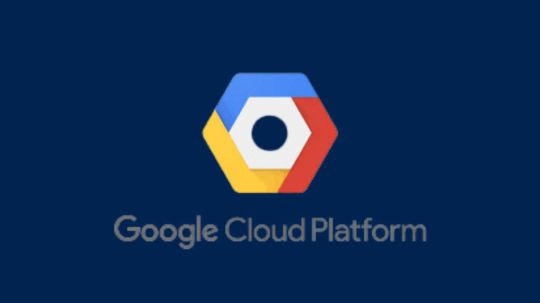
Strong infrastructure advancements for your future that prioritizes AI
To increase customer performance, usability, and cost-effectiveness, Google Cloud implemented improvements throughout the AI Hypercomputer stack this year. Google Cloud at the App Dev & Infrastructure Summit:
Trillium, Google’s sixth-generation TPU, is currently available for preview.
Next month, A3 Ultra VMs with NVIDIA H200 Tensor Core GPUs will be available for preview.
Google’s new, highly scalable clustering system, Hypercompute Cluster, will be accessible beginning with A3 Ultra VMs.
Based on Axion, Google’s proprietary Arm processors, C4A virtual machines (VMs) are now widely accessible
AI workload-focused additions to Titanium, Google Cloud’s host offload capability, and Jupiter, its data center network.
Google Cloud’s AI/ML-focused block storage service, Hyperdisk ML, is widely accessible.
Trillium A new era of TPU performance
Trillium A new era of TPU performance is being ushered in by TPUs, which power Google’s most sophisticated models like Gemini, well-known Google services like Maps, Photos, and Search, as well as scientific innovations like AlphaFold 2, which was just awarded a Nobel Prize! We are happy to inform that Google Cloud users can now preview Trillium, our sixth-generation TPU.
Taking advantage of NVIDIA Accelerated Computing to broaden perspectives
By fusing the best of Google Cloud’s data center, infrastructure, and software skills with the NVIDIA AI platform which is exemplified by A3 and A3 Mega VMs powered by NVIDIA H100 Tensor Core GPUs it also keeps investing in its partnership and capabilities with NVIDIA.
Google Cloud announced that the new A3 Ultra VMs featuring NVIDIA H200 Tensor Core GPUs will be available on Google Cloud starting next month.
Compared to earlier versions, A3 Ultra VMs offer a notable performance improvement. Their foundation is NVIDIA ConnectX-7 network interface cards (NICs) and servers equipped with new Titanium ML network adapter, which is tailored to provide a safe, high-performance cloud experience for AI workloads. A3 Ultra VMs provide non-blocking 3.2 Tbps of GPU-to-GPU traffic using RDMA over Converged Ethernet (RoCE) when paired with our datacenter-wide 4-way rail-aligned network.
In contrast to A3 Mega, A3 Ultra provides:
With the support of Google’s Jupiter data center network and Google Cloud’s Titanium ML network adapter, double the GPU-to-GPU networking bandwidth
With almost twice the memory capacity and 1.4 times the memory bandwidth, LLM inferencing performance can increase by up to 2 times.
Capacity to expand to tens of thousands of GPUs in a dense cluster with performance optimization for heavy workloads in HPC and AI.
Google Kubernetes Engine (GKE), which offers an open, portable, extensible, and highly scalable platform for large-scale training and AI workloads, will also offer A3 Ultra VMs.
Hypercompute Cluster: Simplify and expand clusters of AI accelerators
It’s not just about individual accelerators or virtual machines, though; when dealing with AI and HPC workloads, you have to deploy, maintain, and optimize a huge number of AI accelerators along with the networking and storage that go along with them. This may be difficult and time-consuming. For this reason, Google Cloud is introducing Hypercompute Cluster, which simplifies the provisioning of workloads and infrastructure as well as the continuous operations of AI supercomputers with tens of thousands of accelerators.
Fundamentally, Hypercompute Cluster integrates the most advanced AI infrastructure technologies from Google Cloud, enabling you to install and operate several accelerators as a single, seamless unit. You can run your most demanding AI and HPC workloads with confidence thanks to Hypercompute Cluster’s exceptional performance and resilience, which includes features like targeted workload placement, dense resource co-location with ultra-low latency networking, and sophisticated maintenance controls to reduce workload disruptions.
For dependable and repeatable deployments, you can use pre-configured and validated templates to build up a Hypercompute Cluster with just one API call. This include containerized software with orchestration (e.g., GKE, Slurm), framework and reference implementations (e.g., JAX, PyTorch, MaxText), and well-known open models like Gemma2 and Llama3. As part of the AI Hypercomputer architecture, each pre-configured template is available and has been verified for effectiveness and performance, allowing you to concentrate on business innovation.
A3 Ultra VMs will be the first Hypercompute Cluster to be made available next month.
An early look at the NVIDIA GB200 NVL72
Google Cloud is also awaiting the developments made possible by NVIDIA GB200 NVL72 GPUs, and we’ll be providing more information about this fascinating improvement soon. Here is a preview of the racks Google constructing in the meantime to deliver the NVIDIA Blackwell platform’s performance advantages to Google Cloud’s cutting-edge, environmentally friendly data centers in the early months of next year.
Redefining CPU efficiency and performance with Google Axion Processors
CPUs are a cost-effective solution for a variety of general-purpose workloads, and they are frequently utilized in combination with AI workloads to produce complicated applications, even if TPUs and GPUs are superior at specialized jobs. Google Axion Processors, its first specially made Arm-based CPUs for the data center, at Google Cloud Next ’24. Customers using Google Cloud may now benefit from C4A virtual machines, the first Axion-based VM series, which offer up to 10% better price-performance compared to the newest Arm-based instances offered by other top cloud providers.
Additionally, compared to comparable current-generation x86-based instances, C4A offers up to 60% more energy efficiency and up to 65% better price performance for general-purpose workloads such as media processing, AI inferencing applications, web and app servers, containerized microservices, open-source databases, in-memory caches, and data analytics engines.
Titanium and Jupiter Network: Making AI possible at the speed of light
Titanium, the offload technology system that supports Google’s infrastructure, has been improved to accommodate workloads related to artificial intelligence. Titanium provides greater compute and memory resources for your applications by lowering the host’s processing overhead through a combination of on-host and off-host offloads. Furthermore, although Titanium’s fundamental features can be applied to AI infrastructure, the accelerator-to-accelerator performance needs of AI workloads are distinct.
Google has released a new Titanium ML network adapter to address these demands, which incorporates and expands upon NVIDIA ConnectX-7 NICs to provide further support for virtualization, traffic encryption, and VPCs. The system offers best-in-class security and infrastructure management along with non-blocking 3.2 Tbps of GPU-to-GPU traffic across RoCE when combined with its data center’s 4-way rail-aligned network.
Google’s Jupiter optical circuit switching network fabric and its updated data center network significantly expand Titanium’s capabilities. With native 400 Gb/s link rates and a total bisection bandwidth of 13.1 Pb/s (a practical bandwidth metric that reflects how one half of the network can connect to the other), Jupiter could handle a video conversation for every person on Earth at the same time. In order to meet the increasing demands of AI computation, this enormous scale is essential.
Hyperdisk ML is widely accessible
For computing resources to continue to be effectively utilized, system-level performance maximized, and economical, high-performance storage is essential. Google launched its AI-powered block storage solution, Hyperdisk ML, in April 2024. Now widely accessible, it adds dedicated storage for AI and HPC workloads to the networking and computing advancements.
Hyperdisk ML efficiently speeds up data load times. It drives up to 11.9x faster model load time for inference workloads and up to 4.3x quicker training time for training workloads.
With 1.2 TB/s of aggregate throughput per volume, you may attach 2500 instances to the same volume. This is more than 100 times more than what big block storage competitors are giving.
Reduced accelerator idle time and increased cost efficiency are the results of shorter data load times.
Multi-zone volumes are now automatically created for your data by GKE. In addition to quicker model loading with Hyperdisk ML, this enables you to run across zones for more computing flexibility (such as lowering Spot preemption).
Developing AI’s future
Google Cloud enables companies and researchers to push the limits of AI innovation with these developments in AI infrastructure. It anticipates that this strong foundation will give rise to revolutionary new AI applications.
Read more on Govindhtech.com
#A3UltraVMs#NVIDIAH200#AI#Trillium#HypercomputeCluster#GoogleAxionProcessors#Titanium#News#Technews#Technology#Technologynews#Technologytrends#Govindhtech
2 notes
·
View notes
Text
The Roadmap to Full Stack Developer Proficiency: A Comprehensive Guide
Embarking on the journey to becoming a full stack developer is an exhilarating endeavor filled with growth and challenges. Whether you're taking your first steps or seeking to elevate your skills, understanding the path ahead is crucial. In this detailed roadmap, we'll outline the stages of mastering full stack development, exploring essential milestones, competencies, and strategies to guide you through this enriching career journey.

Beginning the Journey: Novice Phase (0-6 Months)
As a novice, you're entering the realm of programming with a fresh perspective and eagerness to learn. This initial phase sets the groundwork for your progression as a full stack developer.
Grasping Programming Fundamentals:
Your journey commences with grasping the foundational elements of programming languages like HTML, CSS, and JavaScript. These are the cornerstone of web development and are essential for crafting dynamic and interactive web applications.
Familiarizing with Basic Data Structures and Algorithms:
To develop proficiency in programming, understanding fundamental data structures such as arrays, objects, and linked lists, along with algorithms like sorting and searching, is imperative. These concepts form the backbone of problem-solving in software development.
Exploring Essential Web Development Concepts:
During this phase, you'll delve into crucial web development concepts like client-server architecture, HTTP protocol, and the Document Object Model (DOM). Acquiring insights into the underlying mechanisms of web applications lays a strong foundation for tackling more intricate projects.
Advancing Forward: Intermediate Stage (6 Months - 2 Years)
As you progress beyond the basics, you'll transition into the intermediate stage, where you'll deepen your understanding and skills across various facets of full stack development.
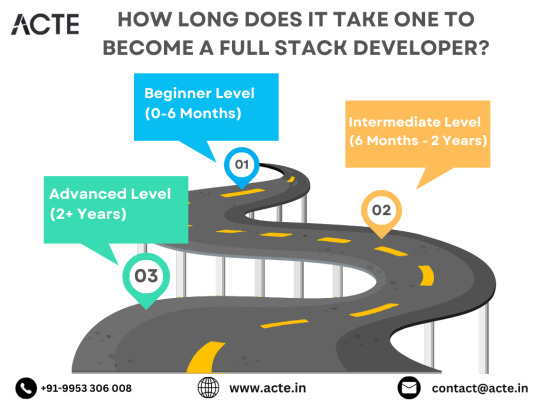
Venturing into Backend Development:
In the intermediate stage, you'll venture into backend development, honing your proficiency in server-side languages like Node.js, Python, or Java. Here, you'll learn to construct robust server-side applications, manage data storage and retrieval, and implement authentication and authorization mechanisms.
Mastering Database Management:
A pivotal aspect of backend development is comprehending databases. You'll delve into relational databases like MySQL and PostgreSQL, as well as NoSQL databases like MongoDB. Proficiency in database management systems and design principles enables the creation of scalable and efficient applications.
Exploring Frontend Frameworks and Libraries:
In addition to backend development, you'll deepen your expertise in frontend technologies. You'll explore prominent frameworks and libraries such as React, Angular, or Vue.js, streamlining the creation of interactive and responsive user interfaces.
Learning Version Control with Git:
Version control is indispensable for collaborative software development. During this phase, you'll familiarize yourself with Git, a distributed version control system, to manage your codebase, track changes, and collaborate effectively with fellow developers.
Achieving Mastery: Advanced Phase (2+ Years)
As you ascend in your journey, you'll enter the advanced phase of full stack development, where you'll refine your skills, tackle intricate challenges, and delve into specialized domains of interest.
Designing Scalable Systems:
In the advanced stage, focus shifts to designing scalable systems capable of managing substantial volumes of traffic and data. You'll explore design patterns, scalability methodologies, and cloud computing platforms like AWS, Azure, or Google Cloud.
Embracing DevOps Practices:
DevOps practices play a pivotal role in contemporary software development. You'll delve into continuous integration and continuous deployment (CI/CD) pipelines, infrastructure as code (IaC), and containerization technologies such as Docker and Kubernetes.
Specializing in Niche Areas:
With experience, you may opt to specialize in specific domains of full stack development, whether it's frontend or backend development, mobile app development, or DevOps. Specialization enables you to deepen your expertise and pursue career avenues aligned with your passions and strengths.
Conclusion:
Becoming a proficient full stack developer is a transformative journey that demands dedication, resilience, and perpetual learning. By following the roadmap outlined in this guide and maintaining a curious and adaptable mindset, you'll navigate the complexities and opportunities inherent in the realm of full stack development. Remember, mastery isn't merely about acquiring technical skills but also about fostering collaboration, embracing innovation, and contributing meaningfully to the ever-evolving landscape of technology.
#full stack developer#education#information#full stack web development#front end development#frameworks#web development#backend#full stack developer course#technology
9 notes
·
View notes
Text
Breaking Barriers With DevOps: A Digital Transformation Journey
In today's rapidly evolving technological landscape, the term "DevOps" has become ingrained. But what does it truly entail, and why is it of paramount importance within the realms of software development and IT operations? In this comprehensive guide, we will embark on a journey to delve deeper into the principles, practices, and substantial advantages that DevOps brings to the table.

Understanding DevOps
DevOps, a fusion of "Development" and "Operations," transcends being a mere collection of practices; it embodies a cultural and collaborative philosophy. At its core, DevOps aims to bridge the historical gap that has separated development and IT operations teams. Through the promotion of collaboration and the harnessing of automation, DevOps endeavors to optimize the software delivery pipeline, empowering organizations to efficiently and expeditiously deliver top-tier software products and services.
Key Principles of DevOps
Collaboration: DevOps champions the concept of seamless collaboration between development and operations teams. This approach dismantles the conventional silos, cultivating communication and synergy.
Automation: Automation is the crucial for DevOps. It entails the utilization of tools and scripts to automate mundane and repetitive tasks, such as code integration, testing, and deployment. Automation not only curtails errors but also accelerates the software delivery process.
Continuous Integration (CI): Continuous Integration (CI) is the practice of automatically combining code alterations into a shared repository several times daily. This enables teams to detect integration issues in the embryonic stages of development, expediting resolutions.
Continuous Delivery (CD): Continuous Delivery (CD) is an extension of CI, automating the deployment process. CD guarantees that code modifications can be swiftly and dependably delivered to production or staging environments.
Monitoring and Feedback: DevOps places a premium on real-time monitoring of applications and infrastructure. This vigilance facilitates the prompt identification of issues and the accumulation of feedback for incessant enhancement.
Core Practices of DevOps
Infrastructure as Code (IaC): Infrastructure as Code (IaC) encompasses the management and provisioning of infrastructure using code and automation tools. This practice ensures uniformity and scalability in infrastructure deployment.
Containerization: Containerization, expressed by tools like Docker, covers applications and their dependencies within standardized units known as containers. Containers simplify deployment across heterogeneous environments.
Orchestration: Orchestration tools, such as Kubernetes, oversee the deployment, scaling, and monitoring of containerized applications, ensuring judicious resource utilization.
Microservices: Microservices architecture dissects applications into smaller, autonomously deployable services. Teams can fabricate, assess, and deploy these services separately, enhancing adaptability.

Benefits of DevOps
When an organization embraces DevOps, it doesn't merely adopt a set of practices; it unlocks a treasure of benefits that can revolutionize its approach to software development and IT operations. Let's delve deeper into the wealth of advantages that DevOps bequeaths:
1. Faster Time to Market: In today's competitive landscape, speed is of the essence. DevOps expedites the software delivery process, enabling organizations to swiftly roll out new features and updates. This acceleration provides a distinct competitive edge, allowing businesses to respond promptly to market demands and stay ahead of the curve.
2. Improved Quality: DevOps places a premium on automation and continuous testing. This relentless pursuit of quality results in superior software products. By reducing manual intervention and ensuring thorough testing, DevOps minimizes the likelihood of glitches in production. This improves consumer happiness and trust in turn.
3. Increased Efficiency: The automation-centric nature of DevOps eliminates the need for laborious manual tasks. This not only saves time but also amplifies operational efficiency. Resources that were once tied up in repetitive chores can now be redeployed for more strategic and value-added activities.
4. Enhanced Collaboration: Collaboration is at the heart of DevOps. By breaking down the traditional silos that often exist between development and operations teams, DevOps fosters a culture of teamwork. This collaborative spirit leads to innovation, problem-solving, and a shared sense of accountability. When teams work together seamlessly, extraordinary results are achieved.
5. Increased Resistance: The ability to identify and address issues promptly is a hallmark of DevOps. Real-time monitoring and feedback loops provide an early warning system for potential problems. This proactive approach not only prevents issues from escalating but also augments system resilience. Organizations become better equipped to weather unexpected challenges.
6. Scalability: As businesses grow, so do their infrastructure and application needs. DevOps practices are inherently scalable. Whether it's expanding server capacity or deploying additional services, DevOps enables organizations to scale up or down as required. This adaptability ensures that resources are allocated optimally, regardless of the scale of operations.
7. Cost Savings: Automation and effective resource management are key drivers of long-term cost reductions. By minimizing manual intervention, organizations can save on labor costs. Moreover, DevOps practices promote efficient use of resources, resulting in reduced operational expenses. These cost savings can be channeled into further innovation and growth.
In summation, DevOps transcends being a fleeting trend; it constitutes a transformative approach to software development and IT operations. It champions collaboration, automation, and incessant improvement, capacitating organizations to respond to market vicissitudes and customer requisites with nimbleness and efficiency.
Whether you aspire to elevate your skills, embark on a novel career trajectory, or remain at the vanguard in your current role, ACTE Technologies is your unwavering ally on the expedition of perpetual learning and career advancement. Enroll today and unlock your potential in the dynamic realm of technology. Your journey towards success commences here. Embracing DevOps practices has the potential to usher in software development processes that are swifter, more reliable, and of higher quality. Join the DevOps revolution today!
10 notes
·
View notes
Text
Demystifying Microsoft Azure Cloud Hosting and PaaS Services: A Comprehensive Guide
In the rapidly evolving landscape of cloud computing, Microsoft Azure has emerged as a powerful player, offering a wide range of services to help businesses build, deploy, and manage applications and infrastructure. One of the standout features of Azure is its Cloud Hosting and Platform-as-a-Service (PaaS) offerings, which enable organizations to harness the benefits of the cloud while minimizing the complexities of infrastructure management. In this comprehensive guide, we'll dive deep into Microsoft Azure Cloud Hosting and PaaS Services, demystifying their features, benefits, and use cases.
Understanding Microsoft Azure Cloud Hosting
Cloud hosting, as the name suggests, involves hosting applications and services on virtual servers that are accessed over the internet. Microsoft Azure provides a robust cloud hosting environment, allowing businesses to scale up or down as needed, pay for only the resources they consume, and reduce the burden of maintaining physical hardware. Here are some key components of Azure Cloud Hosting:
Virtual Machines (VMs): Azure offers a variety of pre-configured virtual machine sizes that cater to different workloads. These VMs can run Windows or Linux operating systems and can be easily scaled to meet changing demands.
Azure App Service: This PaaS offering allows developers to build, deploy, and manage web applications without dealing with the underlying infrastructure. It supports various programming languages and frameworks, making it suitable for a wide range of applications.
Azure Kubernetes Service (AKS): For containerized applications, AKS provides a managed Kubernetes service. Kubernetes simplifies the deployment and management of containerized applications, and AKS further streamlines this process.
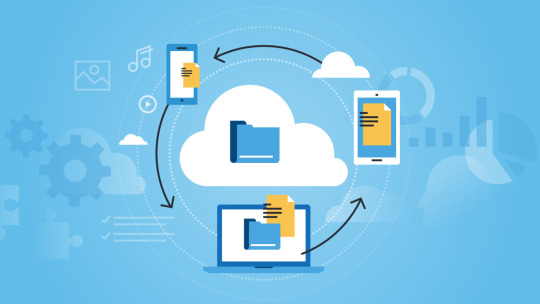
Exploring Azure Platform-as-a-Service (PaaS) Services
Platform-as-a-Service (PaaS) takes cloud hosting a step further by abstracting away even more of the infrastructure management, allowing developers to focus primarily on building and deploying applications. Azure offers an array of PaaS services that cater to different needs:
Azure SQL Database: This fully managed relational database service eliminates the need for database administration tasks such as patching and backups. It offers high availability, security, and scalability for your data.
Azure Cosmos DB: For globally distributed, highly responsive applications, Azure Cosmos DB is a NoSQL database service that guarantees low-latency access and automatic scaling.
Azure Functions: A serverless compute service, Azure Functions allows you to run code in response to events without provisioning or managing servers. It's ideal for event-driven architectures.
Azure Logic Apps: This service enables you to automate workflows and integrate various applications and services without writing extensive code. It's great for orchestrating complex business processes.
Benefits of Azure Cloud Hosting and PaaS Services
Scalability: Azure's elasticity allows you to scale resources up or down based on demand. This ensures optimal performance and cost efficiency.
Cost Management: With pay-as-you-go pricing, you only pay for the resources you use. Azure also provides cost management tools to monitor and optimize spending.
High Availability: Azure's data centers are distributed globally, providing redundancy and ensuring high availability for your applications.
Security and Compliance: Azure offers robust security features and compliance certifications, helping you meet industry standards and regulations.
Developer Productivity: PaaS services like Azure App Service and Azure Functions streamline development by handling infrastructure tasks, allowing developers to focus on writing code.
Use Cases for Azure Cloud Hosting and PaaS
Web Applications: Azure App Service is ideal for hosting web applications, enabling easy deployment and scaling without managing the underlying servers.
Microservices: Azure Kubernetes Service supports the deployment and orchestration of microservices, making it suitable for complex applications with multiple components.
Data-Driven Applications: Azure's PaaS offerings like Azure SQL Database and Azure Cosmos DB are well-suited for applications that rely heavily on data storage and processing.
Serverless Architecture: Azure Functions and Logic Apps are perfect for building serverless applications that respond to events in real-time.
In conclusion, Microsoft Azure's Cloud Hosting and PaaS Services provide businesses with the tools they need to harness the power of the cloud while minimizing the complexities of infrastructure management. With scalability, cost-efficiency, and a wide array of services, Azure empowers developers and organizations to innovate and deliver impactful applications. Whether you're hosting a web application, managing data, or adopting a serverless approach, Azure has the tools to support your journey into the cloud.
#Microsoft Azure#Internet of Things#Azure AI#Azure Analytics#Azure IoT Services#Azure Applications#Microsoft Azure PaaS
2 notes
·
View notes
Text
12-Step Scalable Web App Deployment on Cloud – 2025 Guide
Are you a developer, DevOps engineer, or tech founder looking to scale your web app infrastructure in 2025?
We've created a step-by-step visual guide that walks you through the entire cloud deployment pipeline — from infrastructure planning and Kubernetes setup to CI/CD, database scaling, and blue-green deployments.
Check it out here: 12-Step Scalable Web App Deployment on Cloud (SlideShare)
What’s Inside:
Infrastructure planning (regions, zones, services)
Docker & Kubernetes setup
CI/CD with GitOps
Load balancing, auto-scaling
Vault-based secret management
CDN, rollbacks & uptime alerts
Whether you're part of a web app development company or exploring DevOps software development, this guide offers practical, real-world steps to build high-performance cloud-native apps.
0 notes